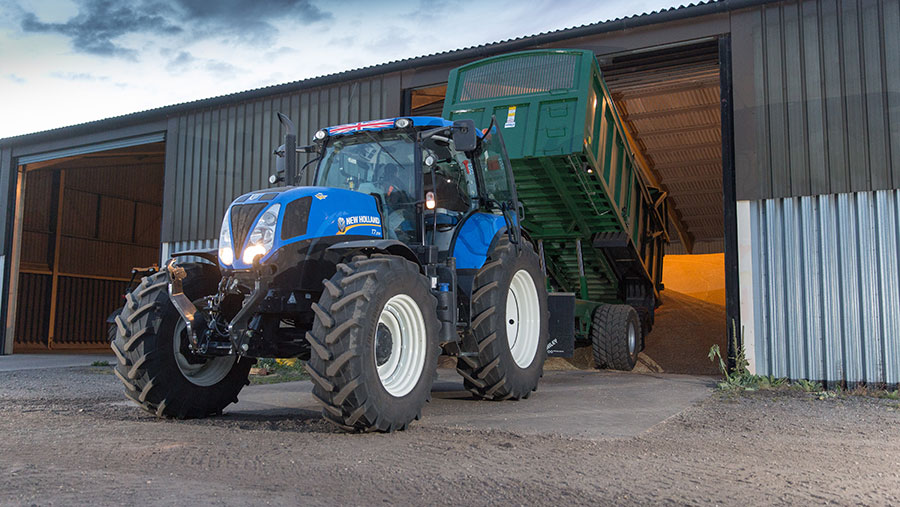New Red Tractor standards aim to improve farmyards
 © Tim Scrivener
© Tim Scrivener Enhancing human safety and improving animal health and welfare are two of the main objectives behind the latest review of Red Tractor farm assurance standards, revealed this week and due to take effect in November.
The comprehensive overhaul follows an industry-wide consultation in the first two months of the year, which attracted more than 3,000 individual pieces of feedback for the organisation’s technical committees and sector boards to consider.
See also: Red Tractor – the pros and cons of farm assurance schemes
Presenting the main changes on Tuesday 20 July, Red Tractor chief executive Jim Moseley said the standards had to satisfy a number of sometimes conflicting interests.
“Our key stakeholder is the shopper and our key purpose is to reassure those shoppers that food has been produced safely and responsibly,” he said.
“But we also interact with farmers and growers, who require that our standards enable them maximum market access and, where possible, a superior return to a non-assured product.
“Red Tractor plays a balancing act, trying to end up with standards that suit shoppers, yet are still practical and viable for farmers,” said Mr Moseley.
Health and safety
As was flagged up in early January, a key part of the review has been health and safety, with a new clause attached to each sector’s standards.
This specifies that, to attain Red Tractor assurance, all farms with workers must have a written health and safety policy.
This is a slight advance on the government’s legal baseline, which only applies to businesses with more than five employees.
“Given the recent HSE report on fatalities within the agriculture industry [which shows a near doubling in on-farm deaths in the past year, to 41], everyone accepts that getting farmers and growers to focus more on health and safety is absolutely vital,” said Mr Moseley.
Head of operations Philippa Willtshire explained this would not mean Red Tractor inspectors would be conducting a health and safety audit, but they would expect members to show them their policies, and were being trained to recognise any obvious shortcomings when visiting farms.
Animal welfare
The other area where extensive changes have been made to standards relates to animal welfare.
- In the beef sector, Red Tractor members will have to have a full health plan (from October 2022) showing how they are trying to eradicate bovine viral diarrhoea
- Across both beef and dairy, tethered housing systems will not be permitted on Red Tractor Farms for stock of any age (though some short-term derogations will be offered)
- On beef and sheep farms, at least one person must have undertaken training to raise awareness of antimicrobial resistance and drive best practice in medicine use (now matching the dairy sector)
- In the dairy sector, the new standards confirm an earlier move to eliminate the routine killing of male calves by 2023
- In the pig sector, all units must put measures in place to minimise the risk of tail biting and avoid the need for tail docking, while stock keepers must be robustly trained in pig euthanasia
Bolt-on modules
The revised standards will also, in time, include a number of “bolt-on” modules, to meet the specific demands of some end-users for worker welfare and sustainability.
Mr Moseley said these will be available next year and might, for example, help farmers meet supermarkets’ net-zero targets and other sustainability objectives.
“If we can develop a module that meets as many of the demands of the Sustainable Farming Incentive [SFI] as we can, then it might be possible in future for Red Tractor farmers to get earned recognition so they won’t have to be separately assessed to qualify for the SFI,” he added.
Q&A with Jim Moseley and Philippa Wiltshire
What is the latest state of play with ‘comingling’ Red Tractor assured grain with non-assured imported grain?
JM First of all, grain is not “comingled” as such. It is actually kept very separate, so it is possible to track Red Tractor grain all the way back to the farm. The comingling occurs when the miller is trying to get a particular blend for a flour.
Secondly, at the safety level, there is probably no difference – in fact, some millers would actually say the safety standards of imported grain are higher than Red Tractor, because they are subjected to huge amounts of lab testing.
In terms of the other, non-safety standards that may not apply to imported grain, the NFU is leading an inquiry to establish what the differences are.
Where are we with virtual and physical inspections?
PW Over the past two or three months we have seen a shift back to physical inspections as the primary method, though all of our assessors are taking precautions, wearing masks and socially distancing.
Farmers are still encouraged to upload their paperwork in advance through the portal to minimise the time the inspectors are on farm – some 8,500 farmers have been doing so.
How can you make Red Tractor more popular with farmers?
JM We don’t necessarily want to be more popular, but would like farmers to appreciate the benefits of Red Tractor more. The principal stakeholder for Red Tractor remains the consumer – and this will become even more important as the market opens up to imports.
There is no point in setting standards that drive farmers out of business, but there is also no point in setting standards that are so weak that imports suit consumers more. I’d also like farmers to recognise that, for what is a relatively minimal audit level, they get access to just about every market, domestically and overseas.
